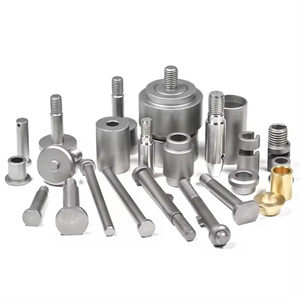CNC machining has a wide and critical application in the transportation industry:
Engine manufacturing:
Cylinder block and cylinder head: High precision machining of cylinder holes, valve seat rings, and spark plug holes can be achieved through CNC machining, ensuring the sealing and performance of the engine.
Crankshaft and camshaft: complex shapes and high-precision journals require CNC machining to ensure smooth and reliable operation.
Connecting rod: The machining accuracy of its large and small head holes is crucial to the performance of the engine, and CNC machining is usually used.
Transmission system:
Transmission housing: The precise internal structure and installation holes require CNC machining to ensure the assembly accuracy and working performance of the transmission.
Differential housing: High precision gear mounting holes and bearing holes are usually machined by CNC.
Chassis system:
Steering joint: The complex shape and multiple mounting surfaces require high-precision CNC machining to ensure the accuracy and reliability of the steering system.
The components of the suspension system, such as control arms and shock absorber brackets, can be machined by CNC to ensure their strength and geometric accuracy.
Motorcycle industry:
Engine components: Similar to automotive engines, key components such as cylinders, pistons, and crankshafts in motorcycle engines also rely on CNC machining to ensure performance.
Frame and suspension: The lightweight and sturdy frame structure and precise suspension components are achieved through CNC machining.
Aircraft components:
Engine blades: The complex aerodynamic shape and high-precision surface requirements are achieved through CNC machining.
Landing gear components: The requirements for high strength and precision often require CNC machining of key components of the landing gear.
Key components of the train:
Wheels and axles: High precision machining ensures the smoothness and safety of train operation.
Brake system components, such as brake discs and calipers, require precise machining to ensure braking performance.
In the manufacturing of high-performance automotive engines, the crankshaft processed by CNC can withstand higher rotational speeds and greater torque, thereby improving the power output of the engine. In the aviation field, the CNC machining accuracy of aircraft engine blades directly affects the efficiency and reliability of the engine.
